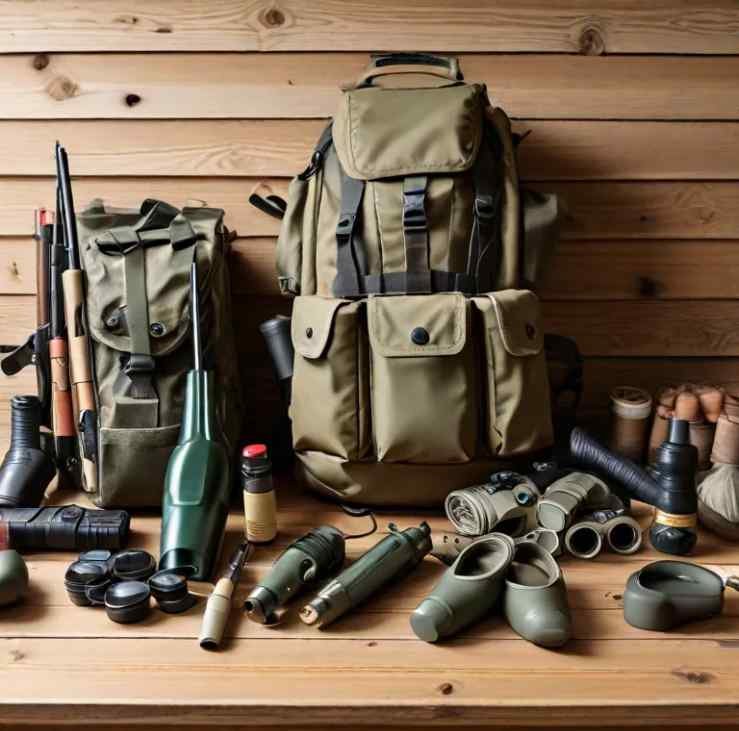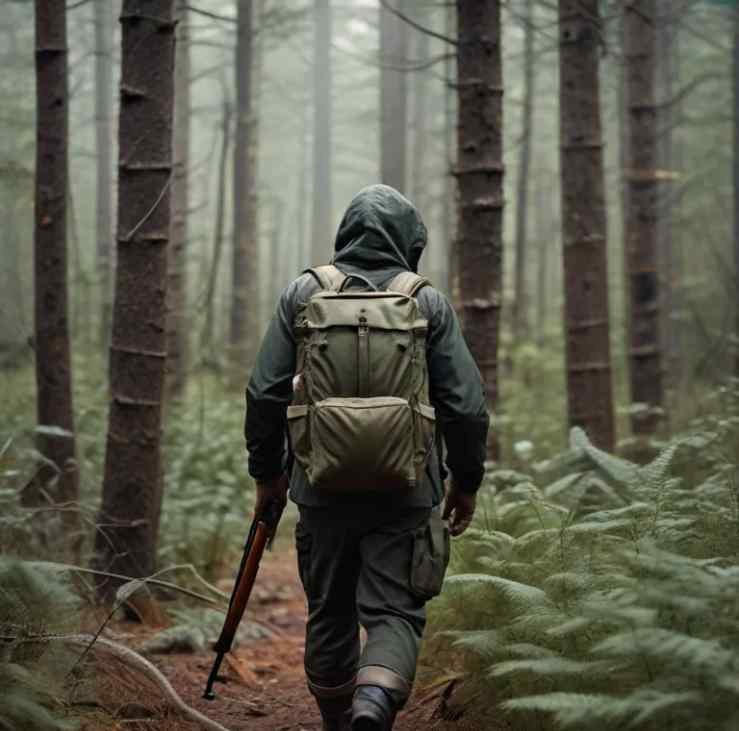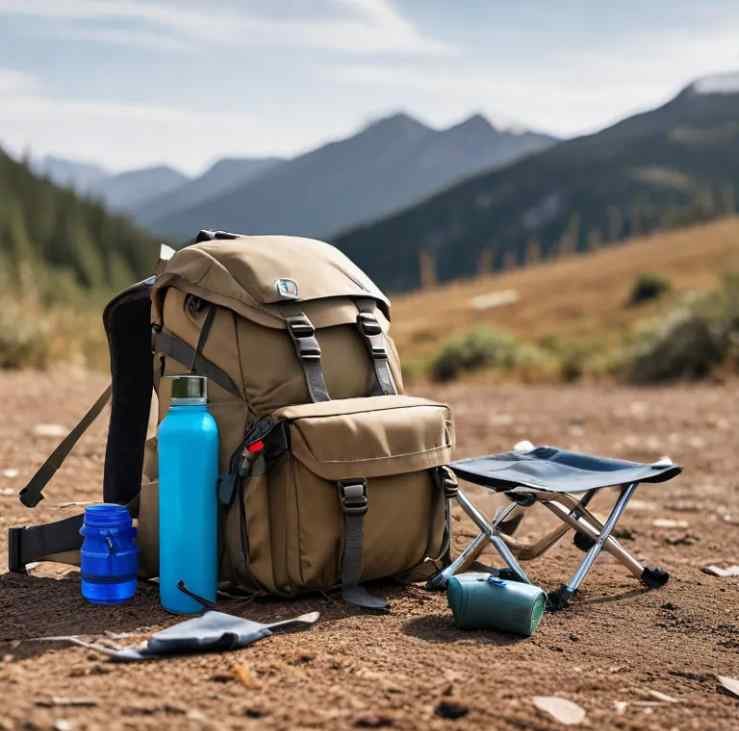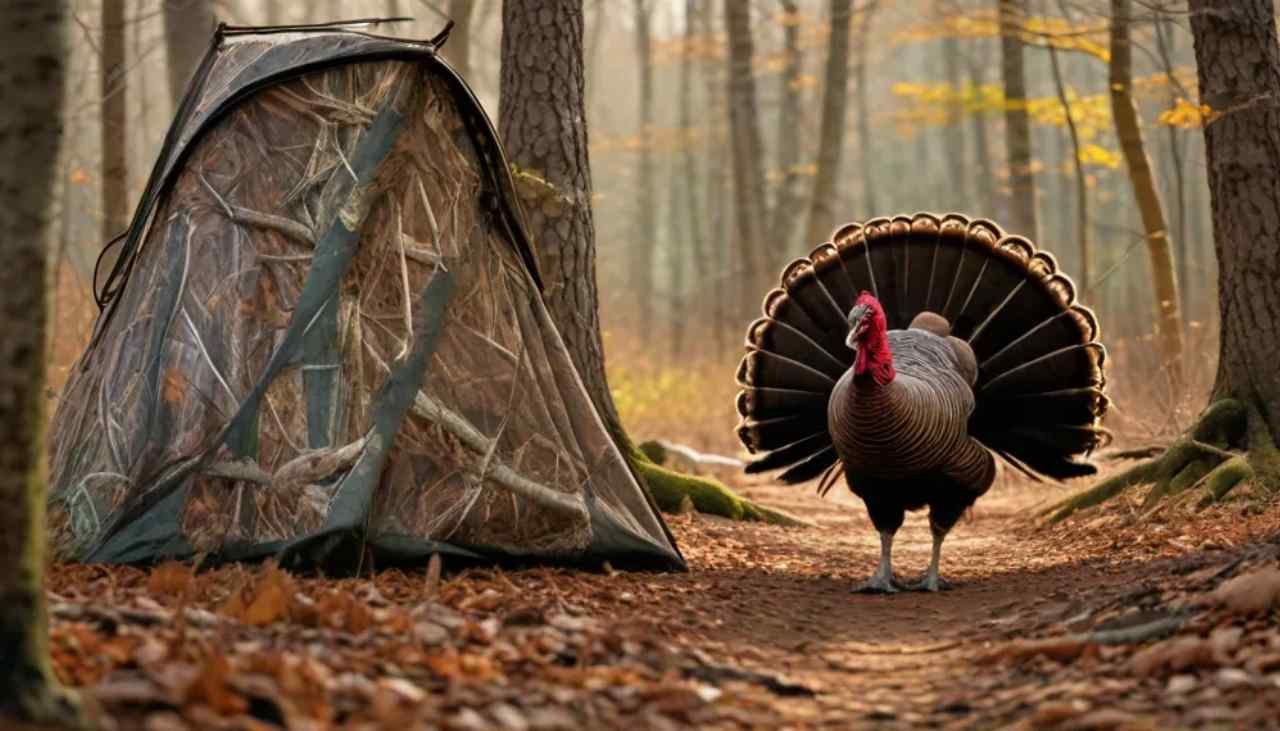The arrival of spring frequently sparks the exhilaration of turkey chasing in America. This special pursuit demands calmness, ability, and proper equipment. If you’re an experienced pursuer or a novice, possessing the accurate gear can greatly influence your achievement. In this easy-to-follow guide, we will discover the top 15 indispensable gears, you’ll be needing for your forthcoming turkey hunting escapade.
The Importance of Having the Right Gear
Chasing turkeys requires lots of time in tough surrounding. Good equipment will make you cozy, hidden, and ready for every chance that comes up. It has a key part in keeping you safe and in making the hunting experience fun.
Essential Turkey Hunting Gear
Alright, let’s zoom in on the details! Here’s a simple run-down of the basic equipment you need to nab your gobbler prize:

A. Firearms
Firearms Turkey hunting’s main options are shotguns and rifles.
- Shotguns: Frequently the go-to for turkey hunting, perfect for short to mid-ranges.
- Gauge selection: The 12-gauge is most common and allows for different shot sizes and loads. The 10-gauge shotgun can work well too, for those liking heavier loads.
- Shot size and choke selection: Turkey loads often use #4, #5, or #6 shot sizes. The right choke is vital to set up your shotgun. Extra full (EF) or turkey-specific chokes work best for tight shot grouping at short distances.
- Rifles: They’re not as usual, but rifles can be great for hunting in open spaces or for longer shots.
- Caliber selection: The .223 Remington and 20 gauge with sabot slugs are top picks for this due to their accuracy and power at long ranges.
B. Ammunition
It’s crucial you pick the right bullets for a fair, successful hunt.
- Turkey loads: They’re made specifically for turkey hunting. This design packs shots closer together for the most effective hit.
- Shot shells: Choose the right shot size. You’ll base this on how far you’ll be and your hunting situation.
- Sabot slugs: These are for rifle hunting. Sabot slugs offer better accuracy and deeper penetration over long distances.
Popular Turkey Shotgun Gauge Options
| Gauge | Shot Capacity | Advantages | Disadvantages |
|---|---|---|---|
| 12 Gauge | 3-5 Shells | Most popular, widest variety of shot sizes and loads | For those with lighter frames, the kickback can be strong. |
| 10 Gauge | 3-4 Shells | More powerful for heavier shot loads | Bigger, weightier shotguns offer less choice when it comes to shells. |
| 20 Gauge | 2-3 Shells | Lighter weight, reduced recoil | They hold fewer rounds and may not perform as well at long distances. |
C. Camouflage Clothing
When pursuing, staying hidden is key. Think about this regarding your clothes:
- Patterns and colors: Choose camouflage designs that fit your pursuing scene. Earthy tones, greens, and browns are popular, with some mixing patterns. For springtime, use green and brown colors that look like fresh leaves.
- Fabric types and layering: Go for flexible and breathable materials that work for layering as per the weather. Synthetic materials often soak up sweat and dry fast, perfect for active hunting. Having a base layer, a mid-layer for insulation, and an outer cover helps you keep up with varied temperatures.

Essential Turkey Hunting Clothing Checklist
| Clothing Item | Considerations |
|---|---|
| Base Layer | Moisture-wicking synthetics for breathability |
| Mid-Layer | Insulated fleece or wool for warmth |
| Outer Shell | Waterproof and breathable fabric for protection |
| Camo Pants | Breathable, quiet fabric with natural earth tone patterns |
| Camo Shirt | Long-sleeved with a comfortable fit |
| Hat | Camo pattern with brim for sun protection |
| Gloves | Thin, camo gloves for dexterity |
| Face Mask | Camo face mask to conceal movement |
D. Decoys
Decoys pull in turkeys well, especially when love is in the air. Hen and jake decoys:
- Hen and jake decoys:Hens draw toms because they make good mates. Young male jakes beef up the scene, sparking rivalry and luring the big bird.
- Using decoys effectively: Location matters most. Know your turkeys. Arrange your decoys like they’re at a turkey dinner or a love fest.
E. Calls
This help to copy the sounds turkeys make, letting you talk to them and attract them. Let’s look at the different kinds of calls.
- Types of turkey calls:
- Box calls: A simple wooden box that can mimic the various sounds these birds make.
- Slate calls: Using a slate surface and a striker, they can create high-pitched noises.
- Diaphragm calls: These help you make silent calls, and you keep them in your mouth using a diaphragm technique that keeps you hidden.
- Calling techniques: Knowing the basic techniques like clucks, yelps, and purrs is key. Combining these calls in the right order to sound like a real turkey conversation will greatly help to bring a target in your direction.
Common Turkey Calls and Their Uses
| Call Type | Description | Uses |
|---|---|---|
| Box | Wooden box with internal striker | It can mimic different chicken and turkey sounds, perfect for clucks, cries, and sharp sounds. |
| Slate | Slate surface with a striker stick | Imitates the high-pitched sound and sharp utterances of young hens exceptionally. |
| Diaphragm | Hands-free call placed against the roof of the mouth | It can create super-realistic yelps and clucks and allows you to call silently while concealed. |
F. Blinds
In hunting turkeys, a blind becomes a hidden spot, crafting a surprise for them.
- Pop-up blinds are handy, like a magician’s trick, you can place them within seconds, hiding you in open spaces.
- Ground blinds bring a tad more stability and let you play architect. You can make them blend into their environment, just like a chameleon. You’ll find blinds in different materials like cloth, shrubbery, or netting. You can install them near popular paths or where turkeys graze.
G. Other Gear
There are many items beyond the basics that can make turkey hunting more fruitful:
- Boots: Tough, waterproof boots are vital for walking through rough landscapes and staying comfortable on your hunt. You should look for boots with solid ankle support, suitable traction for different terrains, and breathability to prevent sweaty feet.
- Field vest: An impressive hunting vest provides plentiful room for crucial items like calls, shells, and binoculars. Choose a vest having numerous pockets and separators to keep everything tidy and easily accessible.
- Calls lanyards: These handy lanyards make your calls easy to grab, so you can switch between them swiftly without scrambling in your pockets or vest.
- Binoculars: A decent pair of binoculars (8×42 or 10×42 magnification) is precious for spotting turkeys from far off and figuring out their gender and type.
- GPS: A GPS device can help you navigate unfamiliar hunting grounds, track your movements, and mark important locations like roost sites or feeding areas.
Turkeys Calls and Calling Techniques
Gearing up is key, but learning calls and their methods might be top on the list for successful turkey hunting. Have these necessities on you:
- Carrying essential supplies: Carry different calls, like a box, slate, and diaphragm call. This lets you switch up your calling plan based on what’s happening and how the turkey reacts.
- Importance of a good quality vest: An easy-to-use hunting vest, having specified spaces for calls, ensures swift access when required. This makes it a breeze to respond promptly to a gobbler’s sounds or alter calling strategies smoothly.
- Lanyards, rangefinders, and other helpful accessories: Use lanyards to keep calls close and quiet, while a rangefinder can help you judge distances for surefire, humane shots.
Field Gear and Safety
Remember, the right gear is key for comfort and security outdoors.

- Sturdy backpack for carrying gear: Essential for holding all your must-have items, like clothes, food, and water, pick a backpack that can comfortably carry what you need and includes a hydration system for easy water access.
- Comfortable folding chair or stool: This lightweight item can offer a rest spot during extended waiting for turkey. Choose a chair that’s compact and can fit in your backpack.
- Essential safety items: Safety first, don’t forget that. Important items include a compass or GPS for direction, a headlamp for dim light situations, and a first-aid kit for minor accidents. Don’t overlook insect repellent and sunscreen, depending on the time and place.
Conclusion
Success in turkey hunting heavily relies on the right gear. Here’s a brief guide that would help any hunter. Remember, this is a basic guide and might need tweaks according to your own requirements. Let’s skim through the gear categories together:
Here’s a quick recap of the essential gear categories we covered:
- Firearms (including both shotguns or rifles with suitable ammo),
- Camouflage clothing for layering, Decoys (like hen and jake),
- Turkey calls encompassing box, slate, and diaphragm types,
- Blinds (options of pop-up or ground),
- Essential gears such as boots, hunting vest, calls lanyard, binoculars, and GPS,
- Field kit with safety items like a backpack, chair, compass, headlamp, and a first-aid kit.
With time, you’ll find what suits you best for hunting according to your style and favorite terrain. With wise investment in equipment and practice of key skills like calling or setup techniques, you’ll be on your journey to an exciting and fruitful turkey game experience.

- 8 Best Trail Cameras for 2024: : Ranked, Tested, and Reviewed for Performance - September 12, 2024
- 2024’s Best Compound Bows for Beginners: Perfect Picks for New Hunters - September 10, 2024
- Top 7 Gear Essentials Every Duck Hunter Needs - July 12, 2024

